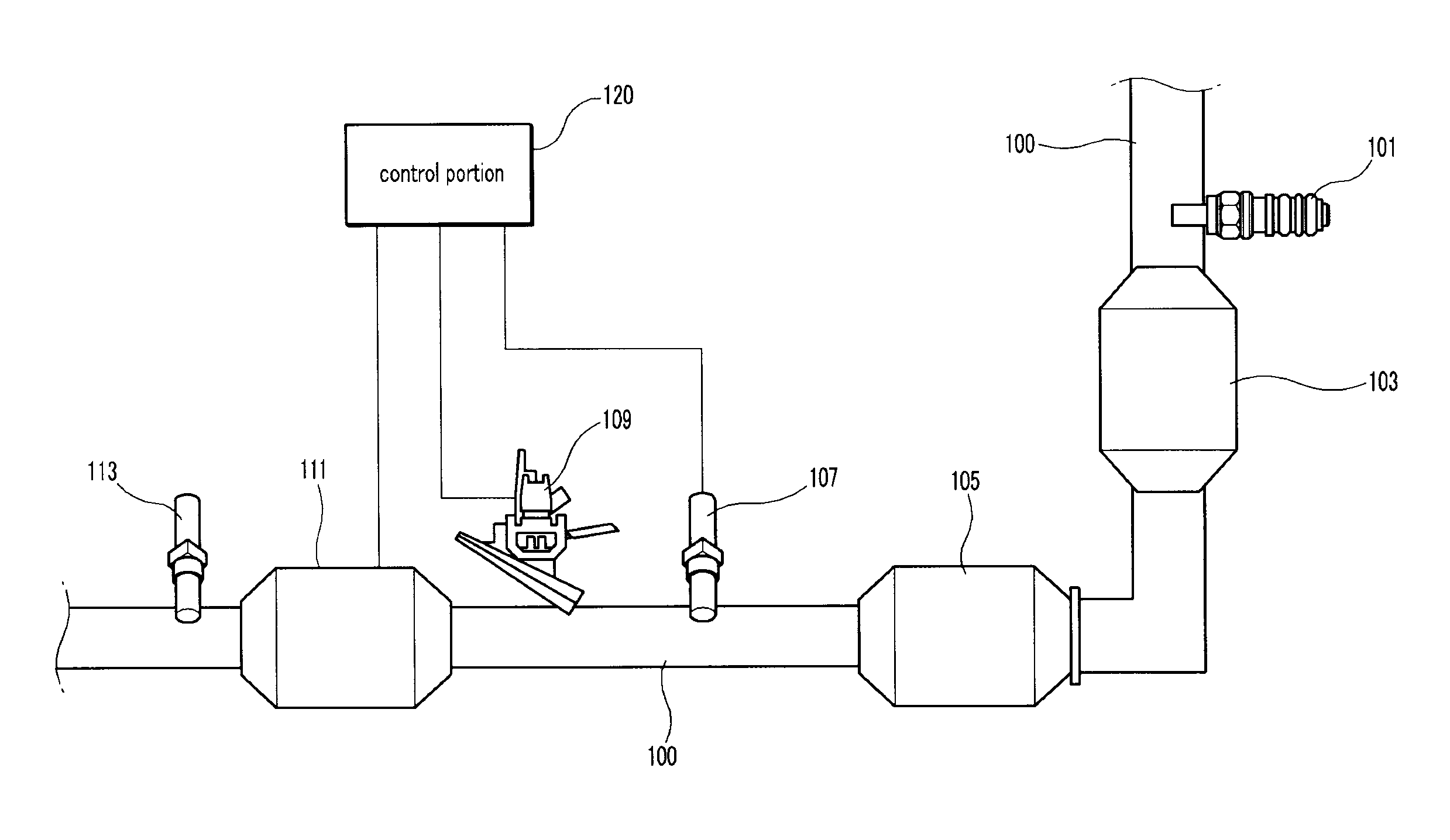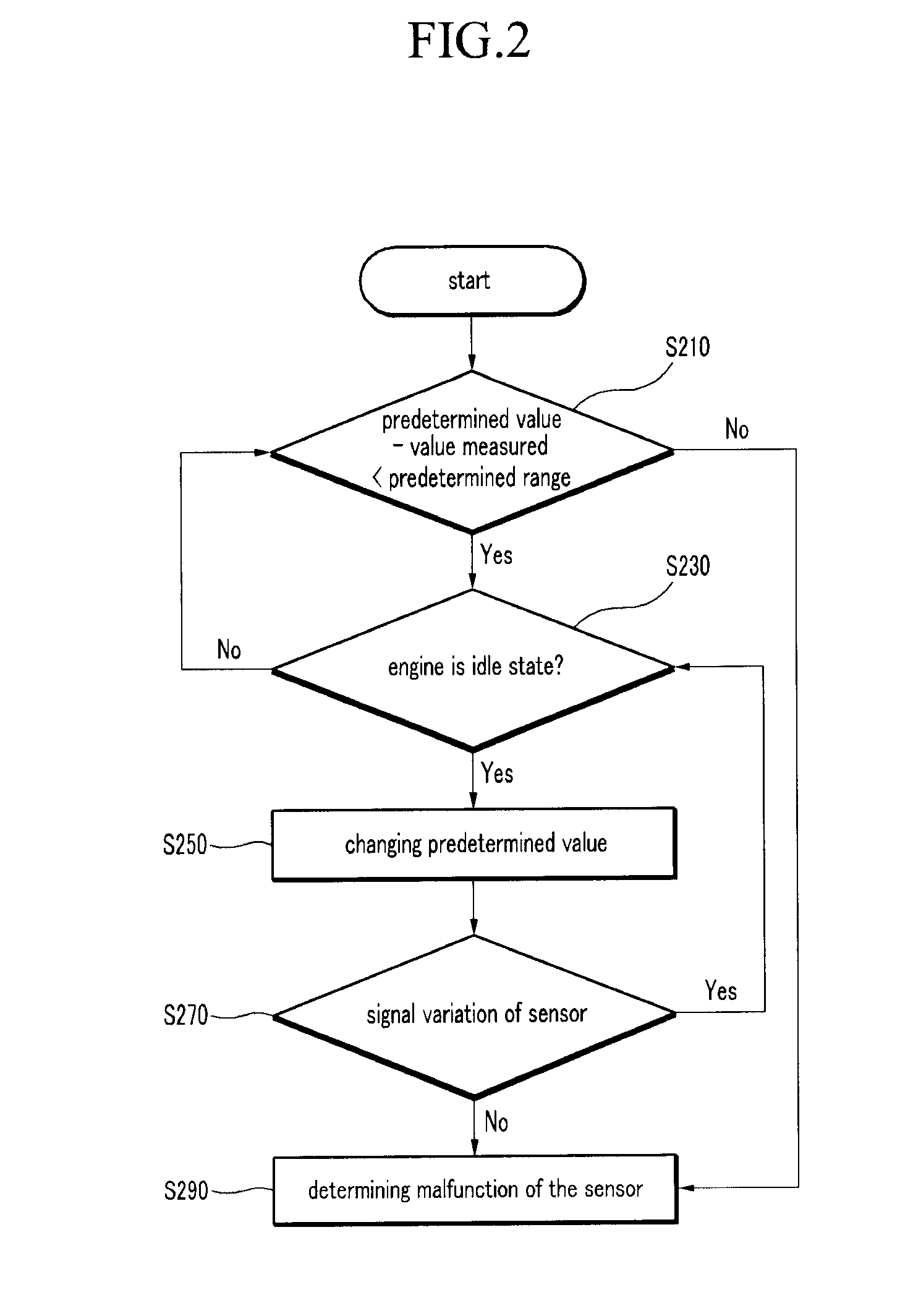Method for determining malfunction of nitrogen oxide sensor and selective catalytic reduction system operating the same
a technology of nitrogen oxide sensor and malfunction detection, applied in the direction of electrical control, exhaust treatment electric control, instruments, etc., can solve the problems of power fluctuation, smoke generation, inaccurate use of only the output signal of the sensor,
- Summary
- Abstract
- Description
- Claims
- Application Information
AI Technical Summary
Benefits of technology
Problems solved by technology
Method used
Image
Examples
Embodiment Construction
[0018]An exemplary embodiment of the present invention will hereinafter be described in detail with reference to the accompanying drawings.
[0019]As shown in FIG. 1, a selective catalytic reduction system according to an exemplary embodiment of the present invention includes a wideband oxygen sensor (linear lambda sensor) 101, a first sensor 107, a selective catalytic reduction apparatus 111, a second sensor 113 and a control portion 120.
[0020]The wideband oxygen sensor 101 is disposed in an exhaust pipe 100 so as to detect oxygen in exhaust gas, and the first sensor 107 is installed at the rear of the wideband oxygen sensor 101 and detects the nitrogen oxide in the exhaust gas. The selective catalytic apparatus 111 is disposed behind the first sensor 107, and includes a urea injector 109. The second sensor 113 is disposed behind the selective catalytic apparatus and detects nitrogen oxide.
[0021]The control portion 120 determines whether the first sensor 107 is disabled or not on the...
PUM
 Login to View More
Login to View More Abstract
Description
Claims
Application Information
 Login to View More
Login to View More - R&D
- Intellectual Property
- Life Sciences
- Materials
- Tech Scout
- Unparalleled Data Quality
- Higher Quality Content
- 60% Fewer Hallucinations
Browse by: Latest US Patents, China's latest patents, Technical Efficacy Thesaurus, Application Domain, Technology Topic, Popular Technical Reports.
© 2025 PatSnap. All rights reserved.Legal|Privacy policy|Modern Slavery Act Transparency Statement|Sitemap|About US| Contact US: help@patsnap.com



